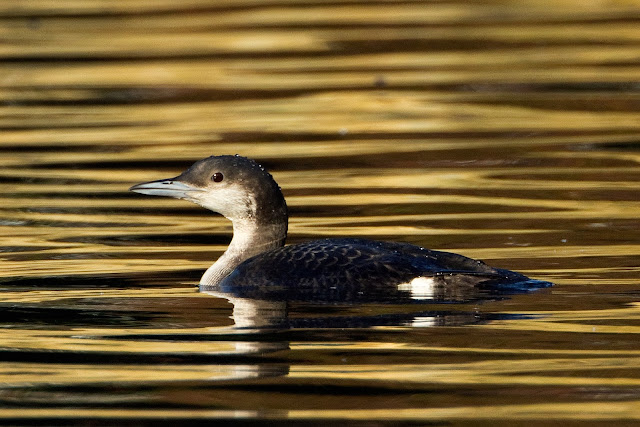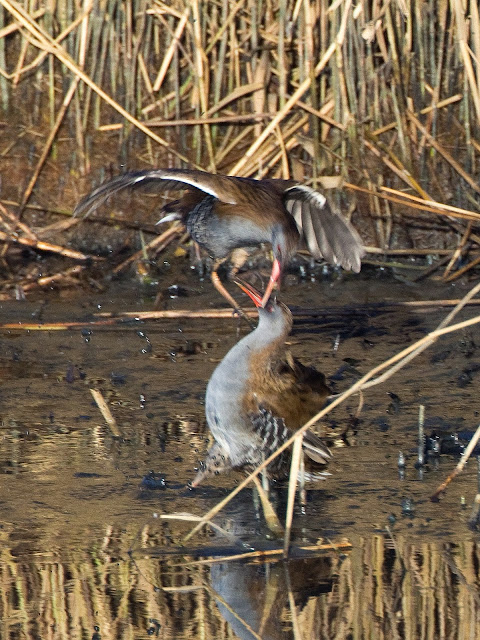Good thinking on Dave's part, we got on to them straight away. Dull and overcast conditions meant that the lighting was poor with shutter speeds of around 1/80sec, but the pictures were still better than those that I got last week.
 |
| Ruddy Shelduck on the Ferry Pool |
 |
| Showing white wing patches |
With the light fading even further we decided to have a look at Church Norton and the beach and then try the Shelducks again later. There were Long Tailed Ducks, Mergansers, and Great Crested Grebes out on the sea but nothing close in, so after about an hour we found ourselves back at the Ferry Pool.
It looked like a bit of a wasted effort at first, the lighting had improved but everything seemed to be asleep. I was just thinking there was no point in taking pictures when all the birds took to the air. We did not see what caused it but it was probably a Peregrine going through.
 |
| A bit blurred but seems to suggest there are no leg rings |
It took me a bit by surprise. I managed to get a few shots as the birds took off but I had the wrong settings on the camera and could not hold focus, so there is only one decent picture.
 |
| Ruddy Shelduck and Lapwing in flight. |
The birds then relocated out into the harbour. We saw them again later when we went round to the North Wall but they were again distant.
 |
| Back out in the middle of the Harbour |
Water levels were again high on the North Wall and there was nothing much to see on the Breech Pool. Movement of the flocks out on the harbour was interesting but the only photo opportunities were a couple of flybys from the local Kingfisher.
 | |
| Perhaps she fancies taking on one of the mullet out in the harbour! |
With the light still poor and the temperature dropping we decided to call it a day and headed for home at midday.

















































